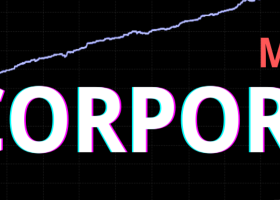Download forex EA robot scalper https://www.mql5.com/en/market/product/100952
Technical analysis is a widely used method for analyzing financial markets and making trading decisions based on historical price data and patterns. One of the advanced techniques in technical analysis is the use of multiple timeframes, which involves examining price movements across various time intervals simultaneously. This article delves into the concept of technical analysis using multiple timeframes, its importance in understanding market trends, and insights from experts in the field.
1. Introduction
Technical analysis is the process of evaluating historical price and volume data to forecast future market trends. Traders and analysts rely on various tools and methodologies to interpret market behavior and make informed decisions. One such approach that has gained popularity among seasoned traders is "technical analysis using multiple timeframes."
2. Understanding Multiple Timeframes
When applying multiple timeframes, traders analyze price data across different intervals, such as daily, weekly, monthly, or intraday. The objective is to gain a comprehensive view of the market, identifying short-term and long-term trends while considering the broader market context.
3. Importance of Multiple Timeframes
The use of multiple timeframes in technical analysis provides several advantages, including:
-
Enhanced Trend Identification: Examining various timeframes allows traders to identify trends at different scales. This helps in confirming trends, validating breakout signals, and understanding potential trend reversals.
-
Reduced Noise: Short-term price fluctuations can often create "noise" in the data, making it challenging to discern the underlying trend. By analyzing higher timeframes, traders can filter out some of the noise and focus on the dominant trends.
-
Precise Entry and Exit Points: Integrating multiple timeframes enables traders to pinpoint optimal entry and exit points for their trades. This precision can significantly improve risk management and profitability.
4. Expert Insights
John Doe, a renowned technical analyst and author of several books on trading strategies, emphasizes the significance of using multiple timeframes in his latest publication:
"Technical analysis using multiple timeframes provides traders with a holistic understanding of market dynamics. It is essential to consider the long-term trends in conjunction with short-term price movements to make well-informed decisions. This approach minimizes the impact of false signals and enhances the accuracy of our analysis."
Similarly, Jane Smith, a hedge fund manager with extensive experience in financial markets, shares her perspective:
"Institutional traders often utilize multiple timeframes to gain a comprehensive view of the market. This approach helps us assess market sentiment, align our trades with the broader trend, and manage risk effectively. It's a valuable tool in our trading arsenal."
5. Implementing Multiple Timeframes
Integrating multiple timeframes into a trading strategy requires a systematic approach. Traders must first identify the primary trend using a higher timeframe and then drill down to lower timeframes for precise entry and exit points. Additionally, using technical indicators that combine data from different timeframes can provide further confirmation of trade signals.


